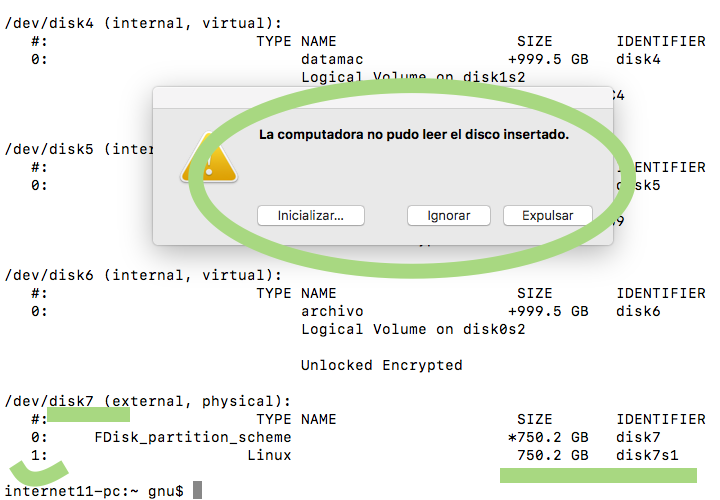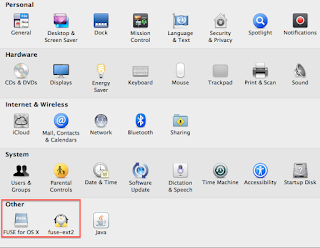

Update: More recently I've found that fuse-ext2 has problems with certain newer ext4 features, so instead it is better to use ext4fuse ( port install ext4fuse or brew install ext4fuse). If that doesn't work try: sudo ext2fuse /dev/disk1s2 /sys_mount_point But if you want to mount the partition into a system directory then you need to run it as root e.g: sudo mount -t fuse-ext2 /dev/disk1s2 /sys_mount_point It may complain about not being able to write to the log file but it should still mount the partition into your home mount point. Combine the diskX and partition number Y like this /dev/diskXsY - e.g: mount -t fuse-ext2 /dev/disk1s2 ~/my_mount_point This will list all partitions for all disks and amongst them you should see the relevant ones listed under the TYPE column as Linux. when installed using MacPorts port install ext2fuse) - then firstly you need to work out where the Linux partition is: diskutil list If you're wondering what the command line is to mount an ext4 partition using fuse and ext2fuse (e.g.

An alternative workaround is to temporarily prevent sleeping while you are using the partitions with something like caffeinate -sdi. Mount? y/n or diskutil umount force before remounting. The mount points will be created under ~/mnt/ (if not present): #!/usr/bin/env bashįor device in $(diskutil list | awk '/Linux/ ') do It will loop over the Linux partitions found and prompt to mount them one by one. The bash script below can be used to automate the mounting. append /Groups/operator GroupMembership $USER
#Osxfuse vs macfuse mac
# $USER is an ootb env variable that stores your mac user name

For recent versions of MacOS ext4fuse works stably for read access only.


 0 kommentar(er)
0 kommentar(er)
